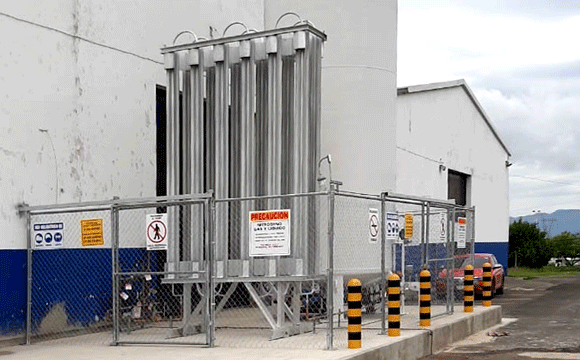Monday Morning Briefing
 Powdered Metal parts supplier Capstan Inc., based in California is in the process of installed a brand new Abbott sintering furnace and nitrogen system at their facility in Guadalajara, Mexico. The installation will be completed by the fourth quarter of 2020 and this investment will bring this plant in line with others the company has around the world. Interesting enough the company issued these comments about why they invested in Mexico rather than China; “When looking at China vs. Mexico manufacturing, labor rates in Mexico are now, in many cases, lower than China. In constant dollar terms, hourly manufacturing wages are lower than those in China. Mexico also offers much steadier wages, making it easier for companies to forecast manufacturing costs. As of 2019, the fully burdened direct laborer wage rate in Mexico is about $3.95 per hour vs. $4.50 per hour in China.” – www.napsintl.com“
Powdered Metal parts supplier Capstan Inc., based in California is in the process of installed a brand new Abbott sintering furnace and nitrogen system at their facility in Guadalajara, Mexico. The installation will be completed by the fourth quarter of 2020 and this investment will bring this plant in line with others the company has around the world. Interesting enough the company issued these comments about why they invested in Mexico rather than China; “When looking at China vs. Mexico manufacturing, labor rates in Mexico are now, in many cases, lower than China. In constant dollar terms, hourly manufacturing wages are lower than those in China. Mexico also offers much steadier wages, making it easier for companies to forecast manufacturing costs. As of 2019, the fully burdened direct laborer wage rate in Mexico is about $3.95 per hour vs. $4.50 per hour in China.” – www.napsintl.com“
Earlier this summer we mentioned an auction at FCA in Kokomo, Indiana which featured 4 vacuum nitriders (to provide some background the Fiat Chrysler transmission facility in Kokomo has one of the largest captive heat treating departments in North America). We speculated at the time that probably these would easily find a home although the large size would deter some potential buyers. As it turns out 3 of the 4 were scrapped which surprised us. These photos show some of the units.
IWT Accepts Rohde Furnace After Successfull Testing; In Bremen, Germany we find IWT (Institute fuer Werkstofforientierte Technologien) a research organization dedicted to heat treating which is jointing funded by German industry and the university. We at ”The Monty ”have visited this facility several times over the years and have found it to be very facinating. The organization has been working with German furnace builder Rohde Schutzgasoefen GmbH to develop a new design of furnace and this is the end result.
”The bell hardening center is designed as a classic plant concept with a wide variety of applications designed to cover several different heat treat processes. Due to its modular design the system can easily be expanded to accomodate future developments. It requires a minimal amount of floor space despite the fact that it is completely automated and can handle up to three consecutive batches without manual intervention. The system is extremely efficient because of its excellent thermal insulation, innovative cooling concepts and coordinated furnace construction materials, especially at high temperatures. The main characteristics of the bell hardening center are its modular design and the possibility for expansion with additional tempering furnaces and other components such as cleaning systems and quenching tanks. In fact this hardening center can replace batch furnaces designed for low pressure carburizing. Other important features include the small footprint, due to the facts that it is loaded at different levels, faster heat-up and cool-down to hardening temperature, faster atmosphere composition and more. This system offers oil, salt and gas quenching and has a work zone of 500mm x 600mm. Gases used are nitrogen, air, methanol, ammonia, propane and acetylene.”
In the picture from left to right: Ingo Bunjes IWT Bremen, Dr.-Ing. Matthias Steinbacher IWT Bremen, Raphael Nees, Natasha Rohde, Konstantin Rohde, Jörn Rohde, Vincent Rohde.
We see that Al Baethke retired just a few weeks ago. Al was with US commercial heat treater Paulo for over 28 years as VP of Engineering. Find out how Paulo compares in size to other North American commercial heat treaters here https://themonty.com/project/largest-north-american-commercial-heat-treats-august-2020/ From SECO/WARWICK we have this press release about a new order they just received from Harsha Engineers in India; “Harsha Engineers Limited, a leading bearing cage manufacturer in India, who has manufacturing facilities in India, China and Romania and who has Customers across 5 Continents, ordered yet another ferritic nitrocarburizing furnace with ZeroFlow technology from SECO/WARWICK. The technology ordered by Harsha is dedicated to Ferritic Nitro Carburizing of bearing cages and was ordered to: improve quality of nitrocarburizing, reduce total cycle and operation cost, meet specific color requirements, and finally provide excellent batch uniformity. The furnace is equipped with a vacuum system, gas control system, turbo cooling, atmosphere cooling system and post oxidation system to get a material very uniform grey color and other tribological properties to meet the specifications of leading bearing manufacturers.
From Oven builder Grieve comes this press release; “550°F TRUCK OVEN; This Grieve oven is a 550°F (288°C) new truck oven customized from the standard TCH-550 model and is currently used for heat processing parts at the customer’s facility. Workspace dimensions of this oven measure 60” W x 60” D x 60” H. 30 KW are installed in Incoloy sheathed tubular heating elements, while a 2000 CFM, 2 HP recirculating blower provides horizontal airflow to the workload. This Grieve truck oven has 6” insulated walls, an aluminized steel interior and aluminized steel exterior with enamel finish. Features include a purge timer, two-position dampers on fresh air inlet and exhaust outlet and a 1200 lb. capacity stainless steel loading truck.”
Somebody is in trouble! We see that auto maker Kia is not sure whether some driveshafts were heat treated or not which is not a good thing; Vehicles Affected: Approximately 830 model-year 2019 Kia Forte sedans. The Problem: The left front axle driveshaft may not have been heat-treated, which can cause it to break, resulting in a sudden loss of drive power and increasing the risk of a crash. To round things out we have this photo from Byron Stewart. Byron is originally from Australia and his father Tom Guler, was a very prominent furnace builder for many years. Byron for the past few years has been designing and building vacuum furnaces for the Chinese market and this is an impressive example. The line you are looking at has two 6 bar vacuum/pressure hardening furnaces and 4 vacuum tempers tempers all designed to heat treat H13 extrusion dies, 1800 mm in diameter and 450 mm thick. The system is being installed at a facility in Yingkou China and should be in operation shorty after a 9 month standstill due to COVID-19.






